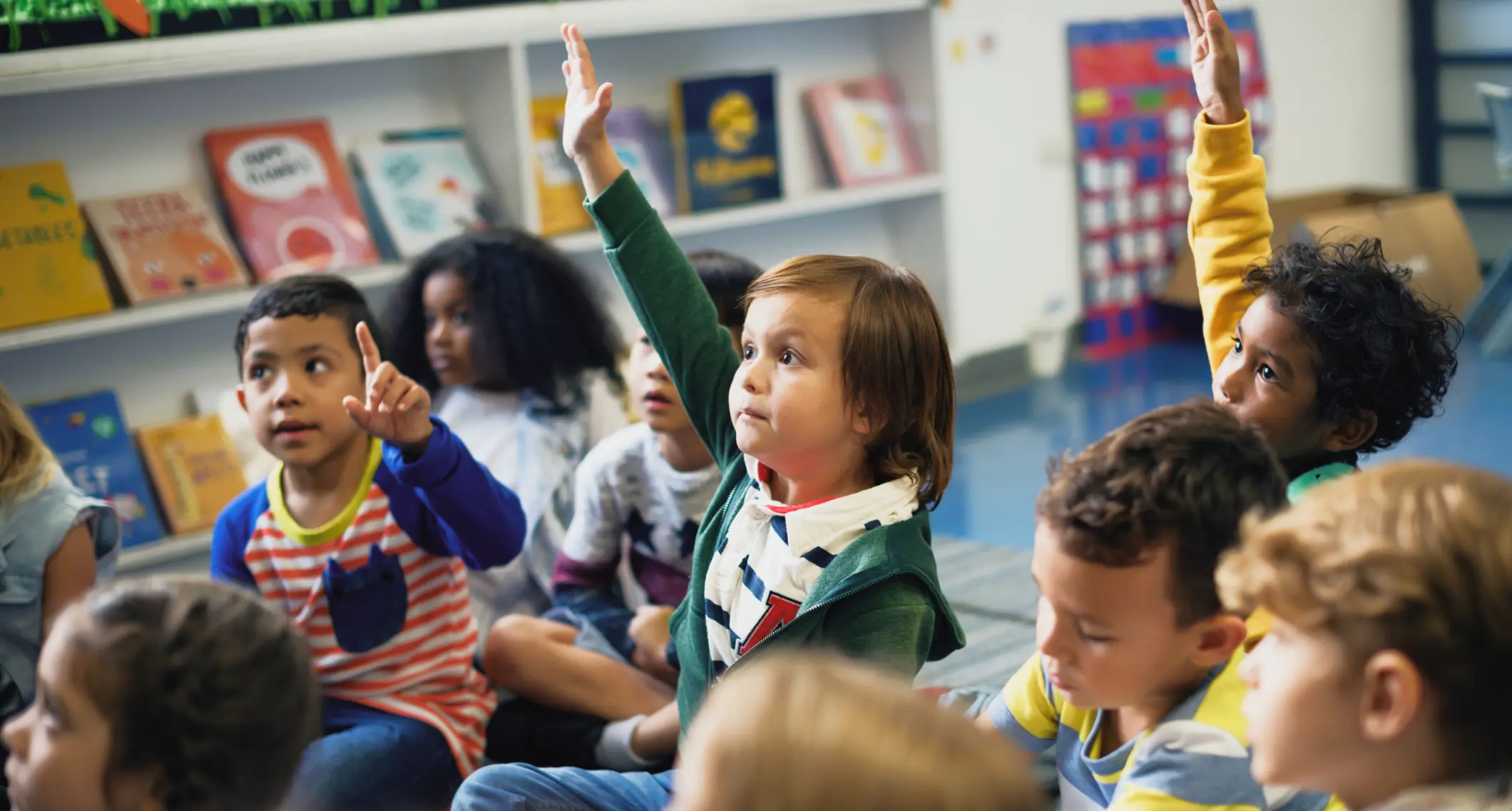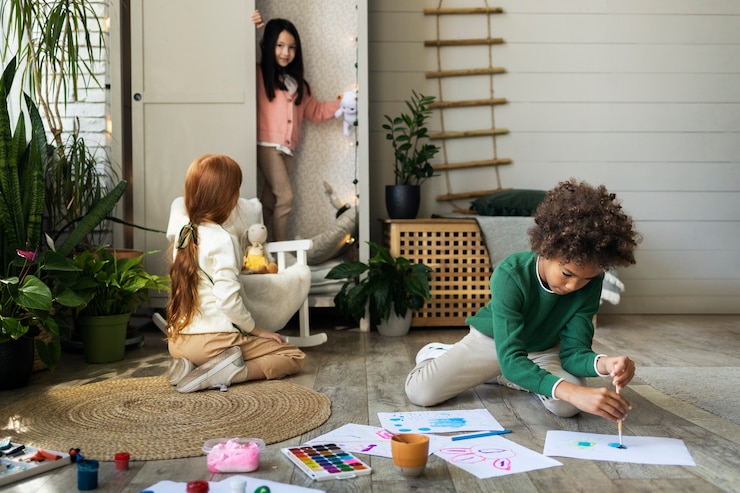How to Help Autistic Children in the Classroom

Starting school is a big step for any child, and for children diagnosed with autism spectrum disorder (ASD), it can come with unique challenges. As a parent, you play a key role in helping your child feel ready and confident before they walk through the classroom doors. With a little preparation at home and guidance from evidence-based therapies like applied behavior analysis (ABA), you can set your child up for a smoother transition into school.
Practicing routines, classroom expectations, and simple schedules at home can help your child feel more comfortable, reduce anxiety, and build a strong foundation for learning and social growth.
Understanding autism in the classroom
Autism spectrum disorder is a developmental condition that affects how a child communicates, interacts, and processes the world around them. Because autism is a spectrum, every child’s experience involves a unique combination of strengths and challenges.
According to the fifth edition of the Diagnostic and Statistical Manual of Mental Disorders (DSM-5), the guide doctors use to diagnose behavioral health conditions, common characteristics of autism include:
- Difficulty with spoken or nonverbal communication
- Struggles with social interactions
- Sensory processing differences, such as sensitivity to light, sound, or textures
- Difficulty adjusting to changes in routine
At school, these traits might show up as:
- Trouble staying focused or following instructions
- Anxiety during social situations or activity changes
- Feeling overwhelmed by noise, bright lights, or crowded spaces
- Difficulty participating in group activities
Understanding how autism affects your child can help you anticipate what support they may need to feel safe, calm, and capable in the classroom.
How parents of autistic children can support classroom readiness
Every child learns best when they feel safe and supported. As a parent, you can help your child build confidence and develop the skills they’ll use every day at school. Here are strategies you can use at home, alongside the support of your child’s teachers and ABA therapists:
1. Create a predictable routine
Autistic children may feel more secure when they know what’s coming next. Create a steady morning and evening routine at home, with regular times for meals, play, and rest. Before school starts, try practicing parts of a typical day, like “circle time” or “snack break,” so your child gets used to the rhythm of a school day. Simple reminders before transitions (“In five minutes, we’ll clean up and start reading”) can make change feel easier for your child.
2. Use clear and direct communication
Clear, simple instructions can help your child understand what’s expected. Use short sentences and pair your words with pictures to show what’s next. Celebrate all communication attempts, whether spoken, signed, or nonverbal, to encourage your child to keep building those skills.
3. Focus on strengths
Your child’s unique strengths and interests can be powerful learning tools. If they have a strong memory, love numbers, or notice details others might miss, work these into activities at home. You can share these details with your child’s teachers so they can know what helps your child stay engaged.
4. Provide sensory support
If your child is sensitive to certain sounds, lights, or textures, practice coping strategies at home that they can also use in school. Create a calm corner with soft lighting and fidgets, or help your child get used to headphones if noise is overwhelming. Having tools that can help soothe and regulate their senses can prepare them to navigate busy classroom environments.
5. Practice social skills and peer interaction
Role-play common classroom scenarios together, like greeting a teacher, asking for help, or joining a group game. Family board games, storytime, or pretend play can teach turn-taking, sharing, and patience. Practicing these skills helps your child feel more confident when interacting with peers and teachers.
6. Use positive reinforcement
In ABA therapy, therapists use positive reinforcement to help autistic children learn new skills and express their needs in healthy ways. You can do the same at home by recognizing and rewarding your child. Offer specific praise (“I like how you waited your turn!”) and small rewards that motivate them, like a favorite toy or a sticker. Consistent encouragement helps your child feel proud of their efforts and more likely to repeat the skill.
7. Collaborate with teachers and ABA therapists
When parents, teachers, and ABA therapists work together, children thrive. Stay in touch with teachers and therapists, share what’s working at home, and ask about strategies used in the classroom. If your child has an Individualized Education Plan (IEP), review it often to make sure the goals and supports still match their needs.
What is an IEP?
An IEP is a formal document that explains your child’s unique learning needs and the services they’ll receive at school. It is protected under the Individuals with Disabilities Education Act (IDEA), so schools are required to follow it.1
For children diagnosed with ASD, the IEP may include goals in areas like academics, behavior, daily living skills, and communication. It also lists the accommodations and therapies your child may need, such as visual supports, speech therapy, or ABA therapy. Reviewing the IEP regularly with your child’s team at school ensures the plan grows with them.

Activities to practice at home
Preparing for school doesn’t have to feel like homework! It can be fun and playful, too. Here are some activities for supporting autistic children you can try at home:
Social skill activities
- Role-play simple school situations, like asking a question or greeting a teacher
- Play turn-taking games such as Go Fish or Candy Land
- Work on teamwork by doing family projects, like cooking, puzzles, or crafts
Sensory activities
- Fill bins with rice, beans, or sand for safe sensory exploration
- Use glitter jars or lava lamps as calming visuals
- Introduce a favorite comfort item or soft blanket during quiet time
Calming activities
- Practice breathing exercises (inhale for four counts, hold, exhale for four)
- Use cards with faces or words to help your child connect emotions to situations
- Create a cozy space with pillows, stress balls, or favorite books
Explore our full list of recommendations: At Home Activities & Toys for Autistic Children
Get started with ABA therapy for autism
If you’re thinking about how to best support your child’s classroom readiness, center-based ABA therapy can help teach the skills they need for school success.
For school-age autistic children ages 5–12, ABC Academy continues that focused, individualized care. It’s ideal for children who attend school part-time or full-time but would still benefit from extra support. At ABC Academy, children strengthen their social, emotional, and executive functioning skills in a fun, engaging setting that helps them reach their goals both inside and outside the classroom.
Ready to take the next step? Contact us today to connect with an Action Behavior Center near you.
At Action Behavior Centers (ABC), we help children diagnosed with autism spectrum disorder (ASD) reach milestone moments. Compassionate care is at the heart of everything we do, and our highly trained clinicians deliver evidence-based applied behavior analysis (ABA) therapy tailored to each child’s unique needs.
Our autism services include diagnostic support, 1:1 individualized care, parent training, school readiness programs, and Early Intensive Behavioral Intervention (EIBI) across hundreds of centers in Arizona, Colorado, Illinois, Minnesota, North Carolina, and Texas. Because no family should have to wait for help, ABC offers immediate access to care. Contact us today to get started.


Join our newsletter
Stay in the loop with tips, events, and resources for families and clinicians. We’ll email you about once a quarter, and you can unsubscribe anytime.
More posts on:

Introducing ABC Academy: Currently Enrolling!
Enroll your child in ABC Academy, a specialized program for school-age children with autism. Offering personalized ABA therapy and school readiness skills, our experienced clinicians help children improve social skills, self-control, organization, and more. With flexible hours and a supportive, engaging environment, ABC Academy is here to help your child thrive. Apply today!
Your child is accepted here
At Action Behavior Centers, we provide applied behavior analysis (ABA) therapy, a gold standard approach for helping children with autism. Our evidence-based therapies are carefully crafted to meet your child’s needs and unlock their strengths and abilities.




